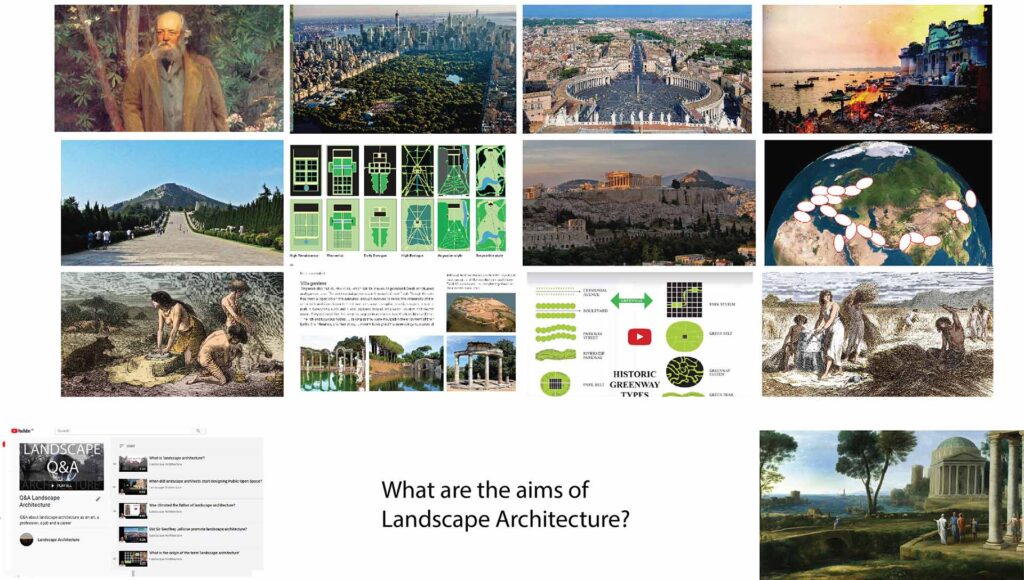What are the aims of landscape architecture? Q&A

Question What are the aims of landscape architecture?
Short answer. They’re Vitruvian. Landscape architects aim to make places with good functional, ecological and visual qualities.
Longer answer: This video is a short history of the desire to find and arrange landscapes for human use and enjoyment.
These aims can be glimpsed in cave paintings from 20 and 30,000 years ago. Rough cave walls seem to be landscapes. Wild animals seem to hunted and painted for functional, aesthetic and spiritual reasons. You could call these intentions ‘Vitruvian’ – and they are found in the early records of settlements.
The archaeological remains of the earliest cities, humanised landscapes, and gardens date from about 10,000 years ago when, presumably, sites for settlements and ceremonies were chosen on the basis of landscape assessments.
Landscape architecture became an organised profession in the nineteenth century and an international profession in the 20th century.
A version of this video was published on Youtube in 2019 as The story of landscape architecture. It’s not a history of named designers or of design styles but you can find an outline of these stories in two sibling videos:
- One is a short history of western landscape architecture as an art of ‘design on the land’. The approach is art-historical and it uses style diagrams to summarise the history of designed gardens and their influence on the design of cities and landscapes.
- The other is a video about twenty of the great people in the history of landscape architecture – ten from the east and ten from the west. The lists include kings, queens, emperors, religious leaders AND the trained professional designers who are now carrying the art forwards. Most of the examples are gardens, which I think of in Vitruvian terms: uses, functions and art.
There are links to these videos at the end of this video and there are answers to other questions in the Q&A section of the landscapearchitecture.org.uk website.
What are the 5 primary elements of landscape architecture and landscape design?
They are landform, water, planting, buildings and paving. These elements are composed to make good outdoor places which are useful, beautiful and functional.
What does a landscape architect do?
They prepare drawings to show how landform, water, planting, buildings and paving should be composed to make parks, gardens and public open space of many kinds. This work on town centres, campuses, golf courses, promenades, cycleway networks, new forests and climate change mitigation and adaptation projects.
What is the difference between a landscape architect, a landscape designer and a garden designer?
They work with the same elements (landform, water, plants and structures) but for different clients and at different scales. Landscape architects concentrate on large projects for public clients and companies, though they also design gardens. Garden designers, who sometimes use the title landscape designer, tend to work on private spaces for private clients. They are often the only designer involved, while landscape architects often work with building architects, engineers and many other consultants.
